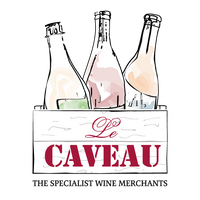Judith Beck makes only 500 cases of this cuvée and it is superb. It has a chewy, plush texture with generous dark cherry, cassis and plum fruit nuanced by herbs and a touch of minerality. It is a highly versatile wine, complementing virtually all types of food and cuisines.
Beck and her team pick all of the fruit by hand and sort the grapes in the vineyard and at the winery before de-stemming. Fermentation occurs spontaneously, in stainless steel tanks. The young wine is then racked off its skins and moved into 1000-2000 l, neutral acacia wood casks for two months where it completes its malolactic fermentations. It is then transferred to 4-6 year old barriques for 8-10 months of aging. Beck matures her Blaufrankisch in two phases in wood in order to attain the round, complex and vivid style she seeks.
WEINGUT JUDITH BECK, GOLS, Burgenland
Biodynamic, Natural
Judith Beck’s winery is run as a family business. Since 1976 the area under vine increased from 5 to 15 ha. Most of the vineyards are situated at the Wagram of the Parndorfer Plate, the most important site of the region. Judith took over in 2004 and from 2007 Judith has produced wines in accordance with biodynamic principles. The winery is housed in an impressive airy new building in the middle of the vineyards from Gols. Now the emphasis is on refining the style whilst capturing the potential of the grapes. Judith is passionate about the traditional red wine varieties: Blaufränkisch and St. Laurent. Judith is an impressively calm, thoughtful person and that sense of relaxation seems to transmit itself into her wines, which possess a lightness of touch not always apparent in this region.
As mentioned, the focus is on the vine growing. Biodynamics is an art of healing which takes advantage of the holistic curativeness of nature. It aims at strengthening the natural resistance of the plant. Pest and disease control are mainly affected in a prophylactic manner. “We encourage the formation of humus, as a basis of healthy soils, by regularly applying cattle manure which we prepare ourselves and by cultivating grass between the rows. Herbal teas (such as stinging nettle, chamomile, field horsetail ...) and biodynamic field sprays such as horn manure and horn silica are used under the consideration of moon rhythms; their purpose being to strengthen resistance and further the physiological ripeness of grapes.”




